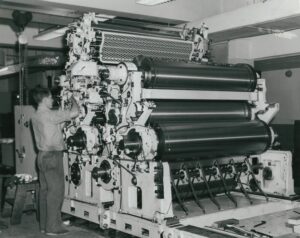Game-Changing Innovations That Shaped Our World


The Printing Press: Revolutionizing Communication
One of the game-changing innovations of the printing press marked a significant turning point in human history. Before the advent of printing, books were copied by hand, a process that was slow and laborious. This made written materials rare and inaccessible to the average person. The printing press, invented by Johannes Gutenberg in the mid-15th century, dramatically changed this by allowing books to be mass-produced. It sparked a revolution in literacy, education, and the spread of knowledge.
With the printing press, information could be distributed widely and quickly, breaking down barriers to education. People across Europe, and eventually the world, gained access to books and other printed materials. This accessibility fostered the spread of new ideas, from scientific discoveries to political revolutions. It also played a pivotal role in the Protestant Reformation, as Martin Luther’s 95 Theses reached a broad audience, challenging the authority of the Catholic Church. The impact of this innovation continues to influence communication today, with modern printing technologies still building on Gutenberg’s design.
The Steam Engine: Powering the Industrial Revolution
The steam engine is another innovation that altered the course of history. Before its invention, societies relied on manual labor or animal power for transportation and manufacturing. James Watt’s improvement of the steam engine in the 18th century revolutionized industry. It provided an efficient power source that was no longer dependent on natural resources, such as water or wind. The result was a significant leap forward in manufacturing and transportation.
As steam engines became more widely used, they powered factories, trains, and ships, fueling the Industrial Revolution. This shift drastically changed the way people lived and worked. Cities grew rapidly as people moved from rural areas to urban centers in search of factory jobs. Additionally, the steam engine enabled the transportation of goods over greater distances, thereby expanding trade and opening up new markets. The steam engine not only changed the economy but also laid the foundation for modern technological advancements.
The Telephone: Connecting the World
Invented by Alexander Graham Bell in 1876, the telephone transformed communication and business practices. Before the advent of the phone, people relied on letters, telegrams, or face-to-face meetings for long-distance communication. While these methods were effective, they were slow and cumbersome. The telephone eliminated the need for written correspondence, allowing people to communicate instantly across vast distances.
This invention led to the creation of global communication networks. People could now contact each other without the delay of waiting for written messages to be delivered. Businesses also benefited, as communication became more efficient and cost-effective. Additionally, the telephone played a crucial role in the development of the modern media industry, facilitating the rapid exchange of news and information. The invention of the phone set the stage for the interconnected world we live in today, where global communication is just a click away.
The Light Bulb: Illuminating the World
The light bulb is often associated with Thomas Edison, who perfected it in 1879, but its development was the result of many inventors’ efforts over several decades. Before the invention of the light bulb, people relied on candles, gas lamps, or oil lamps for illumination, all of which were limited in effectiveness and safety. The invention of the light bulb brought reliable, safe, and long-lasting light to homes and businesses, changing daily life.
Electric lighting also played a significant role in the development of modern cities. Streetlights, powered by electricity, made it possible for people to work, travel, and socialize after dark. Additionally, the widespread use of electric lighting spurred other technological innovations, such as the development of the electrical grid. These advances allowed for greater economic productivity and improved living standards. Today, the light bulb remains a symbol of innovation, having paved the way for modern electricity use in countless aspects of life.
The Internet: Connecting a Digital World
The internet is the most transformative innovation in recent history. While early forms of networked communication existed in the mid-20th century, it wasn’t until the late 1980s and early 1990s that the internet became a widespread tool. Originally developed as a means for academics and researchers to share information, it quickly grew into a global network connecting millions of people.
As the internet evolved, it changed nearly every aspect of life. It reshaped business, education, entertainment, and social interactions. Online shopping, social media, and instant messaging have revolutionized the way people communicate and conduct business. The internet has also democratized access to information, allowing anyone with a connection to learn and grow. Furthermore, it enabled the rise of new industries, such as e-commerce and tech startups. The internet continues to reshape the world, and its impact on daily life is immeasurable.
These five innovations—the printing press, steam engine, telephone, light bulb, and internet—are just a few examples of how technological advancements have reshaped history. Each one has contributed to the development of society, economy, and culture in ways that continue to affect our lives. From communication to transportation, these inventions have altered the way we think, work, and interact. Together, they demonstrate the power of human creativity and the ability of innovation to transform the world in ways once thought impossible.
As we move forward, it is clear that innovations will continue to shape the future. These groundbreaking developments will likely open doors to new possibilities, creating a world that is more connected, efficient, and sustainable. Yet, it is essential to remember the historical context of these innovations and how they have laid the foundation for the world we live in today. Each step forward is built on the knowledge and breakthroughs of the past, and who knows what tomorrow’s innovations will bring.
